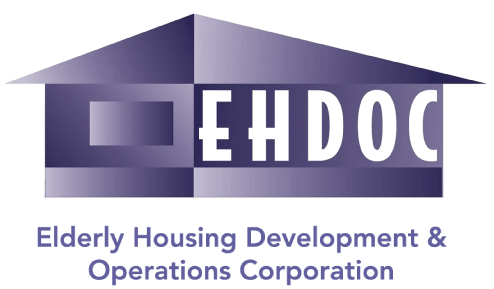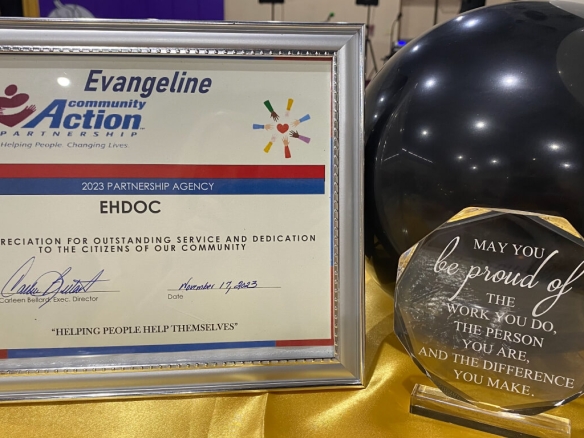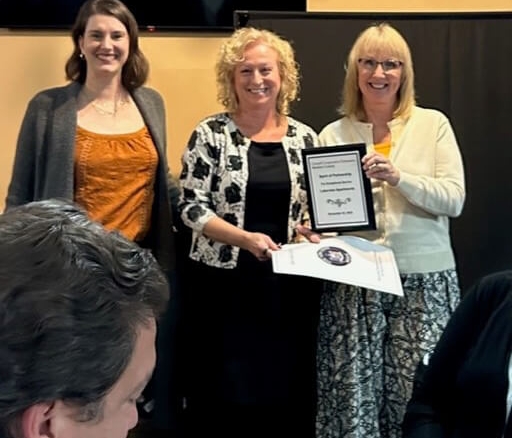Preventing the Spread of COVID-19 in Retirement Communities and Independent Living Facilities
A retirement community or independent living facility is a residential or housing community that is usually age-restricted (e.g., aged 55 and older) with residents who are partially or fully retired and can generally care for themselves without regular nursing or other routine medical assistance.
Communal facilities, community activities, meals, transportation, and socialization opportunities may be provided. Different types of independent housing with support services for older adults include:
- Public housing for low- to-moderate income elderly
- Assisted living homes that do not provide medical services
- Continuing Care Retirement Communities, which include a range of housing options including independent living.
Who is this guidance for?
This guidance is for owners, administrators, operators, workers, volunteers, visitors, and residents of retirement communities and ILF that are not healthcare facilities. Guidance for long-term care facilities (LTCF) that offer medical services, i.e., nursing homes, skilled nursing facilities, assisted living facilities, and adult day care programs to older adults can be found here.
Additionally, a checklistpdf icon is available for use by long-term care facilities and assisted living facilities to assess and improve their preparedness for responding to COVID-19. Retirement communities and ILF can adapt this checklist to meet their needs and circumstances.
Information relevant to retirement communities and ILF can also be found in guidance documents for older adults and people with serious chronic medical conditions and for community-based organizations.
Why is this guidance being issued?
COVID-19 is being increasingly reported in communities across the United States. It is likely that the novel coronavirus is circulating in most communities even if cases have not yet been reported. Residents in retirement communities and ILF are considered to be at higher risk of severe COVID-19 outcomes because of older age and because they may have underlying health conditions, such as chronic heart disease, diabetes, or lung disease. They also may be at higher risk of getting and spreading the virus because of community characteristics, such as frequent social activities, and shared dining facilities and communal spaces. Guidance specific to retirement and independent living communities can help the residents, and those who help serve them, slow the spread of the virus and prevent serious illness.
This guidance takes into account that residents in retirement communities generally care for themselves. Retirement communities and ILF can also consider adopting the more stringent recommendations for long-term care facilities or nursing homes, especially if they are a continuing care retirement community that includes a long-term care facility. Either way, retirement community and ILF owners, administrators, or operators have an important role, working together with residents, workers, volunteers, and the local health departments in slowing the spread of diseases and helping ensure residents are safe.
What owners, operators, or administrators can do:
Owners, administrators, operators and can help slow the spreading of the virus and prevent severe illness within communities by following the guidance below.
Cancel all public or non-essential group activities and events.
For essential group activities that cannot be canceled, implementing the following social distancing measures can help:
- Alter schedules to reduce mixing (e.g., stagger meal, activity, arrival/departure times)
- Limit programs with external staff
- Limit the number of attendees at a given time to fewer than ten people and ask participants to maintain a distance of at least six feet from one another.
- Place chairs and tables at least 6 feet apart during communal dining or similar events.
Because canceling social interaction may increase risk of adverse mental health outcomes, particularly during a stressful event of a disease outbreak, administrators can provide information to help support residents in managing stress and anxiety during this COVID-19 outbreak.
Clean and disinfect all common areas and shared facilities.
- Clean and disinfect common spaces daily
- Give special attention to high-touch surfaces, including, but not limited to, door handles, faucets, toilet handles, light switches, elevator buttons, handrails, countertops, chairs, tables, remote controls, shared electronic equipment, and shared exercise equipment.
- Ensure staff follow the manufacturer’s instructions for all cleaning and disinfection products (e.g., concentration, application method and contact time, necessary personal protective equipment, etc.). A list of products that are EPA-approved for use against the virus that causes COVID-19 is available hereexternal iconexternal icon.
Inform residents, workers, volunteers, and visitors about COVID-19.
Sharing the facts about COVID-19 and ensuring that residents, workers, volunteers, and visitors are aware of the symptoms of COVID-19, health conditions that may put them at higher risk of becoming very sick with COVID-19, its health risks, and what to do if they become ill can make an outbreak less stressful and help prevent or slow the spread of disease.
Administrators can support residents who have no or limited access to the internet by
- Delivering print materials to their residences. Printable materials for community-based settings are available on the CDC website.
- Providing easy to understand handouts and high-visibility posters in high-traffic locations.
- Ensuring educational materials and information are provided for non-English speakers and low literacy persons.
Encourage personal protective measures
Workers, contractors (such as barbers, hairdressers, sitters, and housekeepers), and volunteers providing care in multiple homes or facilities can serve as a source of coronavirus transmission between residences in these facilities. These persons should be advised to limit the number of people they interact with who are at higherrisk of serious complications from COVID-19, and retain distance of >6 feet when interacting.
Help residents establish a “buddy” system to ensure they stay connected.
Owners, administrators, and operators of retirement communities and ILF may want to identify residents who have unique medical needs (including behavioral health needs), and access and functional needs to encourage them to develop a plan if they or their primary caretaker(s) become ill.
They can assist in finding volunteers to assist residents who may need extra assistance in getting the medical help they need and train these volunteers in following personal protective measures. These volunteers should not be persons who are at higher risk for serious illness from COVID-19. Volunteers can also consider checking up on residents via electronic means if appropriate.
Consider limiting the number of non-essential visitors.
Retirement communities and ILF may want to consider limiting visitation (e.g., maximum of one visitor per resident per day, restricting visitors with recent travel and those with symptoms of COVID-19), especially in common areas, to workers, volunteers, and visitors who are essential to preserving the health, including mental health, well-being, and safety of residents. Advise persons that maintaining social distancing (at least 6 feet) can help reduce coronavirus transmission.
Screen, when possible, and advise workers and essential volunteers.
When possible, administrators may want to consider screening workers and essential volunteers who will be interacting with residents for signs and symptoms of COVID-19. This includes actively taking each person’s temperature using a no-touch thermometer, and asking whether or not the person is experiencing shortness of breath or has a cough. They should be advised that if they develop fever or symptoms of respiratory infection while at work, they should immediately put on a facemask, inform their supervisor, and leave the workplace.
Follow guidance for businesses and employers
This guidance also can be helpful for owners, administrators, and operators of retirement communities and ILF and is found here. It includes:
- Actively encouraging sick employees to stay home
- Implementing flexible sick-leave policies and to the extent possible flexible attendance policies (e.g., telework, staggered shifts)
- Emphasizing respiratory etiquette and hand hygiene
- Ensuring hand hygiene supplies are readily available in all buildings.
What residents can do:
Residents can follow the recommendations for persons at higher-risk of COVID-19 to protect themselves and others:
- Clean your hands often
- Wash your hands often with soap and water for at least 20 seconds, especially after blowing your nose, coughing, or sneezing, or having been in a public place/common area.
- If soap and water are not available, use a hand sanitizer that contains at least 60% alcohol.
- To the extent possible, avoid touching high-touch surfaces in public places – elevator buttons, door handles, handrails, handshaking with people, etc. Use a tissue or your sleeve to cover your hand or finger if you must touch something.
- Wash your hands after touching surfaces in public places.
- Avoid touching your face, nose, and eyes.
- Clean your hands often
- Wash your hands often with soap and water for at least 20 seconds, especially after blowing your nose, coughing, or sneezing, or having been in a public place/common area.
- If soap and water are not available, use a hand sanitizer that contains at least 60% alcohol.
- To the extent possible, avoid touching high-touch surfaces in public places – elevator buttons, door handles, handrails, handshaking with people, etc. Use a tissue or your sleeve to cover your hand or finger if you must touch something.
- Wash your hands after touching surfaces in public places.
- Avoid touching your face, nose, and eyes.
Additionally, they can avoid close contact:
- Stay in your homes or outdoors away from groups of people, as much as possible.
- Limit visitors to persons essential to maintaining their health, well-being, and safety. Social interaction is important; however, in-person social interactions are associated with increased risk of infection.
- Learn and practice alternative ways to interact, including replacing in-person group interactions with video or telephone calls.
- Learn more about managing stress and anxiety during COVID-19.
Establish a “buddy” system to ensure they stay connected.
Residents can seek out a “buddy” who will regularly check on them (using preferably non-face-to-face communication) and help care for them if they get sick. This person cannot be a person who is at higher risk of complications if they become ill with COVID-19.
Ensure continuity of the regular care and medical services they receive.
Residents can work with their primary caretakers to identify alternative caretakers to ensure continuity of care should there be any interruptions to the regular services they receive. Telemedicine services may be available to them. They can work with their medical providers to determine if any elective procedures or non-emergent services can be delayed without negatively impacting their health. They can ask their medical providers if they have a formal “telehealth” system for their regular appointments and, if not, ask if they can still communicate by telephone (instead of visits) to reduce the number of face-to-face interactions.
Have medication and supplies on hand.
Residents may want to consult with their healthcare providers and, if possible, plan to keep an extra supply of their regular prescriptions. Mail-order medications also could be considered as an alternative for those unable to get longer supplies of medication. They can ensure that they have an adequate supply of food and everyday essentials in their homes should a disruption occur for an extended period.
Keep their homes clean and disinfected.
It is important that residents keep their homes clean and disinfected by following these instructions. If they become ill or if they are caring for someone who is ill, they can follow the guidance found here.
What volunteers and visitors can do:
There are many ways volunteer or visitors can reduce the spread of illness:
Avoid entering the facility, the premises, or private residences
unless your presence is essential to preserving the health, including mental health, well-being, and safety of residents.Follow personal protective measures
found here and the recommendations set forth by the facility they are visiting.
Maintain social distance
of at least six feet from residents can reduce transmission. Do not visit if you recently had contact with persons who have symptoms of COVID-19 or if you recently traveled. Most importantly, do not enter the retirement community or ILF if you are sick.Avoid large groups and travel, especially on planes and cruise ships.
If you, as a volunteer, regularly visit the retirement community and ILF, consider taking greater precaution to protect the residents because they are higher-risk persons. These precautions include avoiding large group gatherings and crowds, delaying non-essential travel including plane trips, and avoiding embarking on cruise ships. Volunteers and visitors who have recently traveled should avoid visiting the retirement community and ILF.
Watch for symptoms of illness and follow the recommended steps if you get sick.
If you develop respiratory illness symptoms while at the retirement community or ILF, immediately put on a facemask when possible, leave if possible, self-isolate, and notify the residents you visited and administrators. If you were there with a volunteer organization, notify the organization. Additional guidance on what you can do if you get sick can be found here.
What workers can do:
As a worker, you can follow the same recommendations as for volunteers and visitors, plus:
Follow standard infection prevention and control practices, basic personal protective recommendations
and any other site- and task-specific infection prevention and control measures implemented by their employer.
Maintain social distance
of at least six feet from residents whenever possible. Outside of work, avoid contact with persons who have symptoms of COVID-19.
Watch for symptoms of illness and follow the recommended steps if you get sick.
Stay home if you are sick and notify your supervisors if you become sick outside of work hours. If you become sick while at the facility or on the premises, put on a facemask, leave immediately, and notify your supervisor. Additional guidance on what you can do if you get sick can be found here.
When a case has been confirmed in the retirement facility or ILF
If a person with COVID-19 resides in or recently has been to a retirement community or ILF, CDC recommends the following additional measures:
Coordinate with local health officials.
- Upon learning that a resident, worker, volunteer, or visitor of the retirement community or the ILF has COVID-19, ask the person to self-isolate and contact local health officials.
- Notify the local health department about any clusters of residents or workers with respiratory illness (e.g., 3 or more persons with onset of respiratory symptoms within 72 hours).
Local health officials will help determine the appropriate course of action for risk assessment and public health management in the facility or community.
Communicate with residents, workers, volunteers, and visitors.
In coordination with local health officials, communicate the possible COVID-19 exposure to all residents and workers, volunteers, and visitors. This can be done by placing signage in common areas and entrances/exists and by letter to all residents. Residents could be advised to inform their recent personal visitors of potential exposure.
- Maintain confidentiality as required by the Americans with Disabilities Act (ADA) and Health Insurance Portability and Accountability Act (HIPAA.
- Messages should attempt to counter potential stigma and discrimination
Ask residents to self-monitor for 14 days and take action, if sick.
Self-monitoring means a person takes his/her temperature twice a day and pays attention to cough or difficulty breathing. If a resident feels feverish or their temperature is 100.4°F/38°C or higher, they have a cough, or difficulty breathing during the self-monitoring period, the following actions will help prevent spreading further illness:
- Stay home
- Limit contact with others
- Report their illness to retirement community and ILF administrators
- Seek advice by telephone from a healthcare provider or their local health department to determine whether medical evaluation is needed
- Follow CDC guidance on when to discontinue isolation



